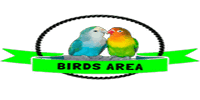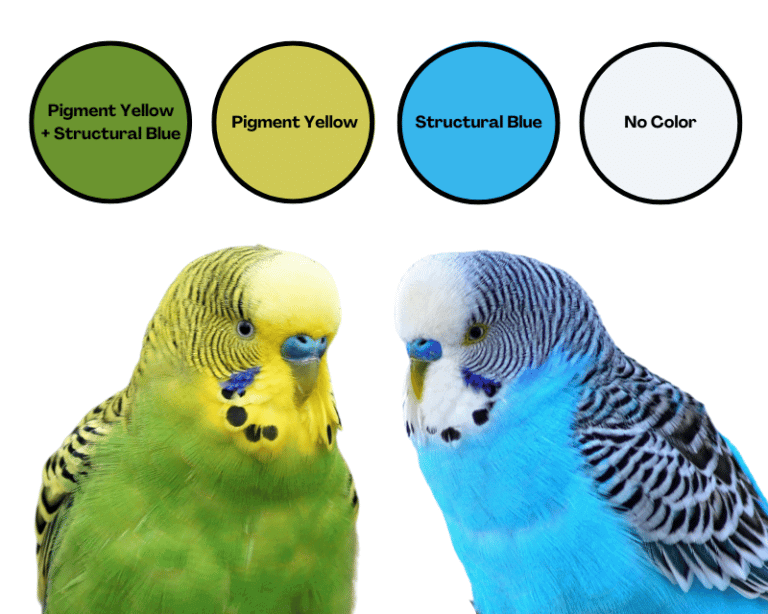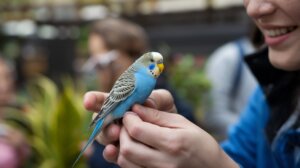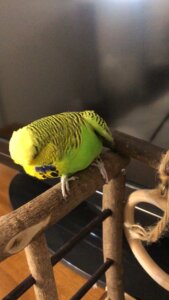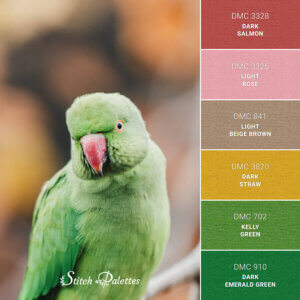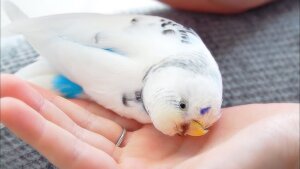10 Popular Budgie Bird Types
Budgies, or parakeets, come in various types with distinct colors and patterns. This guide explores the top 10 popular budgie varieties.
Budgies are beloved for their vibrant colors, lively personalities, and ease of care. Originating from Australia, these small parrots have become popular pets worldwide. Budgies come in a wide range of colors, including blues, greens, yellows, and whites. Each type has unique characteristics, making them fascinating to bird enthusiasts.
Understanding the different varieties helps in choosing the perfect pet. This guide provides insights into the most popular budgie types, highlighting their features and appeal. Whether you’re a new or seasoned bird owner, learning about these beautiful birds can enhance your experience and appreciation.

Credit: www.linkedin.com
Introduction To Budgie Birds
Budgie birds, also known as budgerigars or parakeets, are small, colorful birds that make wonderful pets. Originating from Australia, these birds are known for their vibrant plumage and cheerful personalities. Budgies are one of the most popular pet birds worldwide, and with good reason. In this guide, we will explore 10 popular budgie bird types to help you understand their unique characteristics.
Budgie Bird Basics
Budgies are small parrots that typically measure between 7 to 8 inches in length. They have a lifespan of 5 to 10 years, though some may live longer with proper care. Budgies are known for their bright and varied colors, including green, blue, yellow, and white. They have a distinctive barring pattern on their wings and tails.
| Feature | Details |
|---|---|
| Size | 7 to 8 inches |
| Lifespan | 5 to 10 years |
| Colors | Green, blue, yellow, white |
| Origin | Australia |
Why Budgies Make Great Pets
Budgies are known for their playful and social nature. They enjoy interacting with their owners and can be trained to perform tricks and mimic sounds. These birds are also relatively low-maintenance compared to other pets. They require a clean cage, fresh food and water, and regular social interaction.
- Playful Nature: Budgies love to play and explore.
- Social Birds: They enjoy spending time with their owners.
- Trainable: Budgies can learn tricks and mimic sounds.
- Low Maintenance: They require basic care and attention.
Owning a budgie can bring joy and companionship to your life. Their cheerful chirps and playful antics make them a delightful addition to any home.
:strip_icc()/facts-about-budgies-390923_final-79ac99ea468642bd9459497b91d0cbdd.png)
Credit: www.thesprucepets.com
English Budgie
In the world of budgies, the English Budgie stands out for its distinctive charm and elegance. These birds are larger than their wild counterparts and have unique features that make them popular among bird enthusiasts. Let’s delve into the specifics of this fascinating bird type.
Appearance
The English Budgie has a robust and sturdy build. They are generally larger than other budgie types. Their heads are more rounded, and they have puffier feathers around the face and neck.
Their vibrant colors range from bright greens and yellows to soothing blues and whites. The feathers are often more pronounced, giving them a fluffier appearance. Their wings are sleek, and their tails are elegantly long.
Here’s a quick overview of their appearance:
- Size: Larger than wild budgies
- Head Shape: Rounded
- Feathering: Puffier, especially around the face and neck
- Color Varieties: Green, yellow, blue, white
Temperament
The English Budgie is known for its gentle and calm disposition. They are less active compared to their wild counterparts. This makes them perfect for those who prefer a quieter bird.
These budgies are highly social and enjoy human interaction. They can be easily trained to mimic sounds and even learn to talk. Their friendly nature makes them ideal pets for families.
Here are some key points about their temperament:
- Disposition: Gentle and calm
- Activity Level: Less active
- Social Interaction: Enjoys human interaction
- Trainability: Can mimic sounds and talk
Owning an English Budgie can be a delightful experience. Their unique appearance and friendly temperament set them apart.
American Budgie
The American Budgie, also known as the American Parakeet, is a popular pet bird. Small in size, these birds are known for their vibrant colors and friendly nature.
Distinct Features
American Budgies are slightly smaller than their English counterparts. They usually measure around 7 inches in length. Their feathers come in a variety of colors, with green and blue being the most common. These birds have a distinct, sleek body shape.
One of the most striking features is their unique head pattern. They have a series of black lines running from the forehead to the back of the neck. This gives them a characteristic look. Their beak is small and curved, perfect for cracking seeds.
Behavior
American Budgies are highly social and thrive on interaction. They enjoy playing with toys and exploring their environment. These birds are known for their cheerful chirping and mimicking abilities. They can learn to repeat simple words and sounds.
They are also quite active and need space to move around. Regular out-of-cage time is essential for their well-being. Budgies are gentle and can be great companions for children. They bond well with their human families.
In summary, the American Budgie makes an excellent pet due to its friendly nature and vibrant appearance.

Credit: www.amazon.com
Australian Budgie
The Australian Budgie, also known as the Budgerigar, is a popular pet bird. This bird species is native to Australia and is widely admired for its vibrant colors and friendly nature. Let’s explore the physical traits and personality of the Australian Budgie.
Physical Traits
Australian Budgies are small, colorful birds. They typically measure around 7 inches in length. Their feathers come in various colors, including green, blue, yellow, and white. The most common color for a wild Australian Budgie is green with yellow. They have a distinctive wavy pattern on their wings and back.
Here are some key physical traits of the Australian Budgie:
- Size: About 7 inches long
- Weight: Around 1.1 to 1.4 ounces
- Feather Colors: Green, blue, yellow, white
- Beak: Small and curved
- Eyes: Dark with a white iris
Personality
Australian Budgies are known for their friendly and social nature. These birds love interacting with humans and other budgies. They are also very playful and enjoy various toys.
Some key personality traits include:
- Friendly: Enjoys human interaction
- Social: Gets along well with other budgies
- Playful: Loves playing with toys
- Vocal: Can mimic sounds and words
- Curious: Always exploring their environment
These traits make the Australian Budgie an excellent pet for families. They are easy to care for and bring joy to their owners.
Albino Budgie
The Albino Budgie is a stunning bird known for its pure white feathers and captivating red eyes. This unique coloration sets it apart from other budgie types, making it a favorite among bird enthusiasts. Let’s explore the fascinating characteristics and care tips for Albino Budgies.
Coloration
Albino Budgies are entirely white with no other colors or patterns. Their feathers lack any pigmentation, which gives them their distinctive look. The absence of color is due to a genetic mutation that affects melanin production.
They have bright red or pink eyes, which add to their enchanting appearance. The red eyes are another result of the lack of melanin, allowing the blood vessels to show through.
Here’s a quick overview of their coloration:
| Feature | Description |
|---|---|
| Feathers | Pure white, no pigmentation |
| Eyes | Red or pink |
| Beak | Light pink or beige |
Care Tips
Caring for an Albino Budgie involves specific considerations to ensure their health and happiness. Here are some essential care tips:
- Proper Diet: Provide a balanced diet of seeds, pellets, and fresh fruits.
- Clean Environment: Keep their cage clean to prevent infections.
- Regular Exercise: Allow them to fly and play outside the cage daily.
- Social Interaction: Spend time interacting with your budgie to keep them happy.
- Lighting: Ensure they get natural light, but avoid direct sunlight.
By following these simple care tips, your Albino Budgie will thrive and bring joy to your home.
Lutino Budgie
The Lutino Budgie is a vibrant, eye-catching bird. Known for its striking yellow feathers and red eyes, it stands out in any aviary. This bird type is popular among budgie enthusiasts. Below, we will explore its characteristics and health considerations.
Characteristics
The Lutino Budgie is easily recognizable. Its bright yellow feathers shine brilliantly. The red eyes add to its unique appearance. This budgie type often has a playful and friendly temperament. It enjoys interacting with its owners and other birds.
| Characteristic | Details |
|---|---|
| Color | Bright Yellow |
| Eyes | Red |
| Temperament | Playful and Friendly |
Health Considerations
Lutino Budgies require specific care to remain healthy. They are prone to certain health issues. Regular vet check-ups are important. Ensure a balanced diet, including seeds, vegetables, and fruits. Clean their cage regularly to prevent infections.
- Provide a balanced diet.
- Clean the cage weekly.
- Schedule regular vet visits.
Watch for signs of illness, such as feather loss or lethargy. Immediate care can prevent serious health problems. Keeping your Lutino Budgie healthy enhances its quality of life.
Opaline Budgie
The Opaline Budgie is a stunning variety of budgerigar, known for its unique feather patterns. This type of budgie is popular among bird enthusiasts due to its vibrant colors and friendly nature. Below, we explore the unique patterns and breeding information of the Opaline Budgie.
Unique Patterns
The Opaline Budgie stands out with its distinct feather patterns. The key features include:
- Striped Feathers: Opaline budgies have striped patterns on their wings and back.
- Clear Back: The back feathers are usually clear, without any bars.
- Bright Colors: These budgies often display bright colors like green, blue, and yellow.
This unique pattern makes the Opaline Budgie a favorite among bird lovers.
Breeding Information
Breeding Opaline Budgies requires some specific knowledge:
- Pairing: Pair an Opaline with a normal budgie for the best results.
- Genetics: Opaline is a sex-linked mutation. Males pass the trait more often.
- Nesting: Provide a quiet, safe space for nesting.
- Nutrition: Ensure a balanced diet rich in seeds, fruits, and vegetables.
Successful breeding of Opaline Budgies results in beautiful offspring with unique patterns.
Crested Budgie
Among the many types of budgies, the Crested Budgie stands out for its unique appearance. These charming birds have a distinctive crest on their heads. This makes them a favorite for many bird enthusiasts. Let’s dive into the fascinating world of Crested Budgies.
Crest Varieties
Crested Budgies come in several varieties. Each variety has its own unique charm. Here are the most popular types:
- Full Circular Crest: This type has feathers forming a full circle on the head.
- Half Circular Crest: These budgies have a semi-circle of feathers.
- Tufted Crest: Feathers stand up like a tuft on the head.
- Fringed Crest: Feathers form a fringe around the head.
Maintenance
Maintaining a Crested Budgie requires specific care. Here are some tips:
- Feather Care: Regularly check and clean their crest feathers.
- Diet: Provide a balanced diet with seeds, fruits, and vegetables.
- Grooming: Ensure their nails and beak are trimmed.
- Cage Cleaning: Clean the cage weekly to keep it hygienic.
- Health Check: Regular vet visits to monitor their health.
| Maintenance Task | Frequency |
|---|---|
| Feather Care | Weekly |
| Diet Management | Daily |
| Grooming | Monthly |
| Cage Cleaning | Weekly |
| Health Check | Biannually |
By following these steps, your Crested Budgie will stay happy and healthy. Their unique crest will remain beautiful and well-maintained.
Spangle Budgie
The Spangle Budgie is a popular type of budgie known for its unique and beautiful plumage. These birds are not only stunning but also have a delightful personality, making them a favorite among bird enthusiasts.
Markings
Spangle Budgies have distinct and striking markings. Their feathers display a unique pattern where the usual black markings are replaced with white or yellow. This creates a spangled effect that is visually appealing. The wings often have a lace-like appearance.
| Marking Type | Description |
|---|---|
| Wing Markings | Replaced with white or yellow, forming a lace-like pattern. |
| Body Color | Varies from blue, green, yellow, or white, enhancing the spangle effect. |
Activity Level
Spangle Budgies are known for their high activity levels. They are energetic and love to play. These birds enjoy flying, climbing, and exploring their surroundings. Providing toys and a spacious cage keeps them happy and engaged.
- High energy levels
- Loves to play
- Enjoys flying and climbing
Ensure they have enough space to move around. Keeping these birds active prevents boredom and promotes good health.
Clearwing Budgie
The Clearwing Budgie is a popular type of budgerigar. Its unique colors and patterns make it stand out. This guide explores its features and living environment.
Color And Pattern
Clearwing Budgies have bright colors and clear wing patterns. Their wings are almost transparent, showing light-colored bars. The body color is vivid and striking. Common colors include green, blue, and yellow.
Clearwing Budgies often have a white or light face. Their cheek patches are deep violet. The tail feathers are dark, adding contrast to their bright bodies.
Living Environment
Clearwing Budgies thrive in spacious cages. They need room to fly and play. A large cage with horizontal bars is ideal. This allows them to climb and exercise.
Provide plenty of toys and perches. Clearwing Budgies enjoy chewing and exploring. Rotate toys to keep them engaged. They also need a clean environment. Regular cleaning prevents illness and keeps them happy.
Ensure they have fresh water and a balanced diet. Seeds, fruits, and vegetables are essential. A cuttlebone can provide necessary calcium.
| Feature | Description |
|---|---|
| Color | Bright green, blue, or yellow |
| Wing Pattern | Transparent with light bars |
| Face | White or light |
| Cheek Patches | Deep violet |
Clearwing Budgies are social birds. They enjoy human interaction and other birds. Keeping them in pairs or groups can make them happier. They love to chirp and sing. This adds a lively atmosphere to your home.
Frequently Asked Questions
What Are The Top Budgie Bird Types?
There are several popular budgie types including the English Budgie, American Budgie, and Australian Budgie. Each has unique characteristics and charm.
How To Identify Different Budgie Types?
Identify budgie types by their size, color patterns, and temperament. English Budgies are larger, while American Budgies are smaller and more active.
Which Budgie Type Is Best For Beginners?
The American Budgie is ideal for beginners. They are easier to care for, more active, and friendly.
Do Budgie Types Affect Lifespan?
Yes, budgie types can affect lifespan. English Budgies tend to have a shorter lifespan compared to American Budgies due to their size.
Conclusion
Exploring different budgie bird types can be exciting for bird enthusiasts. Each type offers unique colors and personalities. Choosing the right budgie can bring joy and companionship. This guide helps you understand popular budgie varieties better. Happy bird-keeping!
Hello Dear, I'm Poli Kolymnia, owner of many birds (including budgies).
With a deep passion for these feathered companions, I'm here to share my expertise and extensive knowledge on birds care.
My articles cover essential topics like diet, housing, care, and health, providing practical tips to help you create a happy and thriving environment for your birds.
